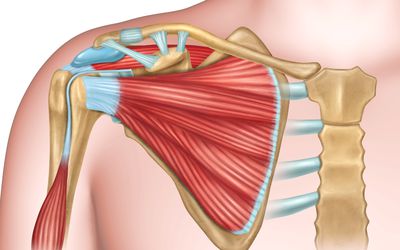- Home
- Fracture Around Shoulder Joint
Fracture Around Shoulder Joint
Fracture around shoulder Joint
Trauma may cause a fracture of the humerus (ball) or the glenoid (socket) of the shoulder joint. The majority of these injuries can be treated without surgery with a good, long-term result. Some fractures are better treated with surgery because they may carry a high risk of arthritis if left alone. Some are unlikely to heal, or may heal in the wrong position if not treated surgically.
Fractures are either described as being displaced or non-displaced. Fortunately, nearly 80 percent of all shoulder fractures are non-displaced.

What are the symptoms?
- Shoulder Pain
- Swelling
- Tenderness
- Deformity or “bump” at the site of the fracture
- Discoloration around the upper arm
- Inability to normally move the arm without pain
What are the risks of surgery?
Some of the risks of surgery of shoulder replacement include infection, wound healing problems, bleeding and injury to nerves and vessels near the fracture. Sometimes the shoulder gets very stiff. Occasionally, the fracture does not heal, and another operation may be recommended.
BOOK AN APPOINTMENT
First Choice for Orthopedics &
Joint Replacements
What are my treatment options?
Medical
Most non-displaced fractures require immobilization in a sling until the fracture heals enough to be comfortable and permit motion without risk of dislodging the fracture fragments. X-rays are used to determine if sufficient healing has occurred to permit motion exercises.
It is vital to maintain flexibility of the elbow, wrist and fingers while resting the shoulder. With your doctor’s guidance, you may commence shoulder movement as the fracture heals. If the arm is moved too early, this can delay healing, but too little movement will result in stiffness.
Surgical
If the fracture fragments are displaced, surgical procedures may be necessary to bring the pieces together and fix them with wires, pins, plates or screws.
If the ball portion of the upper arm is broken, split or crushed, a shoulder replacement may become necessary.
Because the majority of shoulder fractures are non-displaced, recovery of good to excellent motion and function is often achieved. Displaced fractures often require surgery and may result in injury to the adjacent muscles. This can result in more shoulder pain, weakness and residual discomfort.
How long is the recovery period after surgery?
This is often affected by the severity of your original injury. You may need assistance with dressing, bathing, washing and eating for five to 10 days. We will ensure that you have adequate amounts of pain medication to keep you comfortable.
Your doctor will examine you and evaluate your X-rays to determine your progress. Your return to work will be earlier for a desk job, and later for labor-related occupations.
What is the rehab after surgery?
Physical therapy to benefit motion and strength is often required to maximize recovery and improve outcome. Your doctor and therapist will work together and advise you on when to progress your activities and exercises.



